What Is a Transformer? A Simple Explanation for Beginners?
Have you ever wondered how electricity from power plants reaches your home safely? The answer lies in a device called a transformer. But what exactly is a transformer, and why is it so important?
A transformer is an electrical device that changes the voltage of electricity. It can increase voltage for long-distance transmission or decrease it for safe use in homes and businesses. Transformers are crucial in power systems, enabling efficient electricity distribution across vast distances.

In this article, I’ll explain what a transformer is, why we need them, and how they work. Whether you’re a curious homeowner or a student interested in electrical engineering, this guide will help you understand the basics of transformers in simple terms.
What Is a Transformer in Electrical Terms?
Have you ever plugged in a device from another country and wondered why it needs an adapter? The reason often involves transformers. But what exactly is a transformer in electrical terms?
A transformer is an electrical device that transfers energy between two circuits using electromagnetic induction. It can change the voltage and current levels without changing the frequency. Transformers are essential for adjusting voltage levels in power distribution systems.
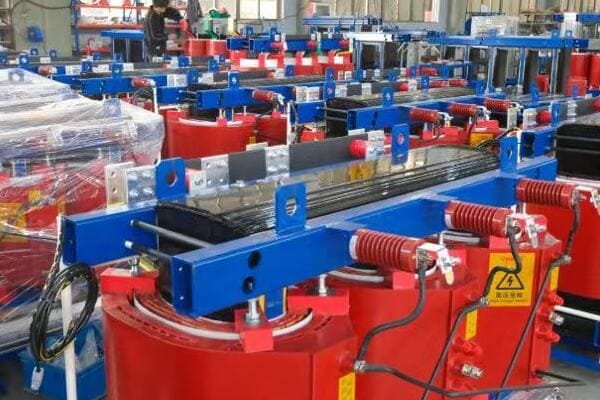
Understanding Transformers in Depth
Let’s break down the key aspects of transformers:
1. Basic Definition
A transformer is:
- An electrical device
- Uses electromagnetic induction
- Changes voltage levels
- Transfers energy between circuits
I remember when I first learned about transformers. I was fascinated by how they could change voltage without any moving parts. It seemed like magic!
2. Core Components
Every transformer has:
- A primary coil (input)
- A secondary coil (output)
- An iron core
3. Types of Transformers
Common types include:
- Step-up transformers (increase voltage)
- Step-down transformers (decrease voltage)
- Isolation transformers (same voltage, electrical isolation)
4. Applications
Transformers are used in:
- Power distribution grids
- Electronic devices
- Industrial equipment
Here’s a simple table showing transformer types and their uses:
| Type | Function | Common Use |
|---|---|---|
| Step-up | Increases voltage | Power plants to transmission lines |
| Step-down | Decreases voltage | Substations to homes |
| Isolation | Maintains voltage, provides isolation | Medical equipment, audio systems |
In my early days as an engineer, I worked on a project involving a large step-down transformer for a new residential area. It was amazing to see how this single device could take the high voltage from transmission lines and make it safe for household use.
One interesting aspect of transformers is their efficiency. Modern power transformers can be up to 99% efficient, which is crucial for minimizing energy losses in power distribution. I once visited a power substation and was impressed by the massive transformers there, silently doing their job with incredible efficiency.
The size of transformers can vary greatly depending on their application. In my career, I’ve worked with transformers ranging from tiny ones in electronic devices to enormous substation transformers that weigh several tons. The principles remain the same, but the scale can be mind-boggling.
Transformers also play a crucial role in renewable energy systems. In a recent solar farm project, I saw how transformers were essential in integrating the variable output of solar panels into the main power grid. They helped match the voltage levels and ensure a stable power supply.
One common misconception about transformers is that they can change the frequency of electricity. In fact, transformers maintain the same frequency between input and output. This is why we need different approaches for converting between 50Hz and 60Hz systems.
The development of transformers has been a game-changer in electrical engineering. Without them, our modern power distribution systems would be impossible. They allow us to transmit electricity over long distances with minimal losses, which has revolutionized how we power our world.
Understanding transformers is key to grasping how our electrical infrastructure works. They are the unsung heroes of our power systems, working silently to ensure we have safe, reliable electricity in our homes and businesses. As we continue to develop new energy technologies, transformers will undoubtedly play a crucial role in shaping our electrical future.
Why Do We Need Transformers in Power Systems?
Have you ever wondered why we can’t just connect power plants directly to our homes? The answer lies in the crucial role of transformers. But why exactly are these devices so essential in our power systems?
Transformers are vital in power systems because they allow electricity to be transmitted efficiently over long distances. They step up voltage for transmission, reducing power losses, and then step it down for safe use in homes and businesses. Without transformers, our current power distribution system would be impractical and inefficient.
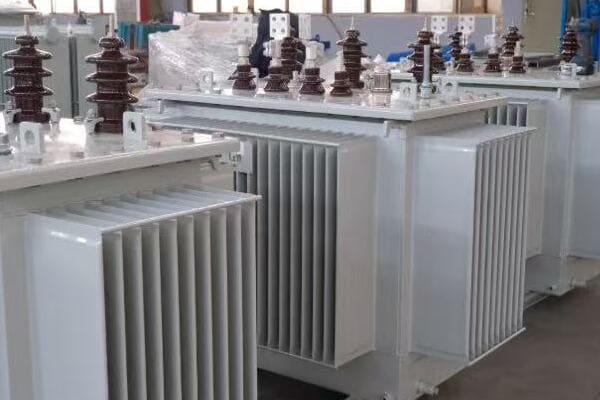
The Critical Role of Transformers in Power Systems
Let’s explore why transformers are indispensable:
1. Efficient Long-Distance Transmission
Transformers enable:
- High voltage transmission
- Lower current in power lines
- Reduced power losses over distances
I once visited a power plant and saw firsthand how massive transformers stepped up the voltage for long-distance transmission. It was impressive to see how these devices made it possible to send power hundreds of miles away efficiently.
2. Safe Distribution to End Users
Transformers are crucial for:
- Stepping down voltage for local use
- Making electricity safe for homes and businesses
- Matching voltage to different appliance needs
3. Isolation and Safety
Transformers provide:
- Electrical isolation between circuits
- Protection against voltage spikes
- Safer electrical systems in buildings
4. Voltage Regulation
Transformers help in:
- Maintaining stable voltage levels
- Compensating for voltage drops in lines
- Ensuring quality power supply
Here’s a table showing the voltage levels in a typical power system:
| Stage | Voltage Level | Transformer Role |
|---|---|---|
| Generation | 10,000 – 25,000 V | Step-up for transmission |
| Transmission | 100,000 – 750,000 V | Long-distance power transfer |
| Sub-transmission | 25,000 – 69,000 V | Regional distribution |
| Distribution | 4,000 – 13,000 V | Local area supply |
| Consumer | 120/240 V | Safe household use |
In my career, I’ve seen how transformers play a critical role in maintaining power quality. I remember a project where we installed a series of transformers along a long transmission line. Each transformer helped to boost the voltage, compensating for losses and ensuring that power reached its destination efficiently.
The ability of transformers to isolate circuits is another crucial aspect. In industrial settings, I’ve implemented isolation transformers to protect sensitive equipment from power disturbances. This not only improved equipment reliability but also enhanced safety for workers.
Transformers also play a vital role in integrating renewable energy sources into the grid. In a recent wind farm project, we used transformers to match the variable output of wind turbines to the consistent voltage needed for the grid. This flexibility is essential as we move towards more diverse energy sources.
One interesting application of transformers is in electric vehicle charging stations. Here, transformers step down the voltage from the grid to levels suitable for car batteries. As electric vehicles become more common, the role of transformers in this area will only grow in importance.
The development of smart grids is introducing new challenges and opportunities for transformer technology. I’ve been involved in projects where we’ve installed smart transformers that can communicate with the grid, adjusting their operation in real-time to optimize power flow and respond to changing demands.
In urban environments, the compact design of transformers is crucial. I once worked on a project in a densely populated city where space was at a premium. We had to design a compact transformer substation that could fit in a small urban lot while still providing power to several city blocks.
The reliability of transformers is paramount in critical infrastructure. In a hospital project, we implemented redundant transformer systems to ensure uninterrupted power supply. This redundancy is a testament to how essential transformers are in maintaining our modern way of life.
Transformers are the unsung heroes of our power systems. They enable the efficient transmission and distribution of electricity, making our modern electrical infrastructure possible. From ensuring the lights stay on in our homes to powering industrial complexes, transformers play a vital role in every aspect of our electrified world. As we continue to evolve our power systems, the importance of transformers in managing and distributing electricity will only grow.
A Real-Life Analogy: Voltage as Water Pressure?
Have you ever struggled to understand how electricity works in power systems? You’re not alone. Many find the concept of voltage confusing. But what if I told you there’s a simple way to think about it using something we’re all familiar with – water?
Voltage in electrical systems is analogous to water pressure in plumbing. Just as water pressure determines how forcefully water flows, voltage determines how strongly electricity "flows" in a circuit. This analogy helps in understanding why we need different voltage levels in power systems, similar to how we need different water pressures for various applications.
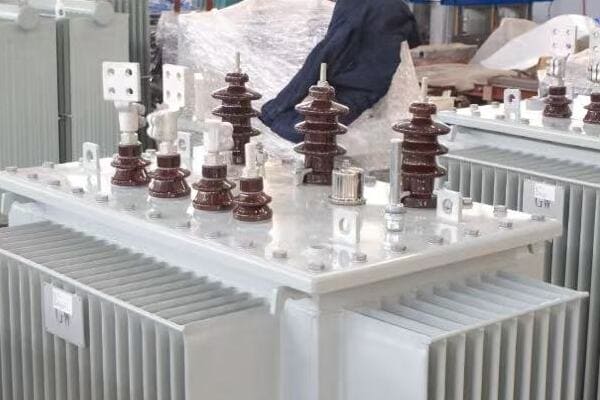
Exploring the Voltage-Water Pressure Analogy
Let’s break down this analogy to understand transformers better:
1. Voltage as Water Pressure
In this analogy:
- Voltage is like water pressure
- Current is like water flow rate
- Wires are like pipes
I often use this analogy when explaining transformers to beginners. It’s amazing how quickly people grasp the concept when they think of electricity like water in pipes.
2. Transformers as Pressure Changers
Transformers are like:
- Pumps that increase water pressure (step-up transformers)
- Pressure reducers in plumbing (step-down transformers)
3. High Voltage Transmission
Similar to water systems:
- High pressure for long-distance water transport
- High voltage for long-distance power transmission
4. Low Voltage for End Use
Just like in homes:
- We reduce water pressure for safe use
- We step down voltage for household appliances
Here’s a comparison table of water systems and electrical systems:
| Water System | Electrical System | Function |
|---|---|---|
| Water Pressure | Voltage | Force driving the flow |
| Water Flow Rate | Current | Amount of flow |
| Pipes | Wires | Conduits for flow |
| Pump | Step-up Transformer | Increases pressure/voltage |
| Pressure Reducer | Step-down Transformer | Decreases pressure/voltage |
In my early days as an engineer, I struggled to explain transformer concepts to non-technical clients. One day, while fixing a leaky faucet at home, it struck me – the plumbing system was a perfect analogy for the electrical grid! Since then, I’ve used this comparison countless times, and it never fails to clarify things.
The water pressure analogy is particularly useful when explaining why we use high voltages for power transmission. Just as it’s more efficient to transport water at high pressure and then reduce it for local use, we transmit electricity at high voltages to minimize losses over long distances.
One interesting aspect of this analogy is how it helps explain power losses. In a water system, narrow pipes with high pressure can lead to leaks and inefficiencies. Similarly, in electrical systems, high current in thin wires leads to power losses through heat. This is why we prefer high voltage (high pressure) and low current (low flow rate) for efficient transmission.
The analogy extends to safety aspects as well. Just as we’re cautious with high-pressure water systems, we need to be extremely careful with high-voltage electrical systems. I once worked on a safety training program where we used this analogy to drive home the importance of electrical safety to maintenance workers.
However, it’s important to note where the analogy breaks down. Unlike water, electricity doesn’t "flow" out of open circuits. I always make sure to point out these limitations to avoid misconceptions. Electricity follows different physical laws, and understanding these differences is crucial for a deeper grasp of electrical systems.
The water pressure analogy also helps in understanding the concept of electrical potential difference. Just as water flows from high pressure to low pressure, electricity "flows" from high potential to low potential. This concept is fundamental in understanding how transformers and electrical circuits work.
In renewable energy systems, this analogy can be extended further. I’ve used it to explain how solar panels and wind turbines are like water collection systems, gathering energy that needs to be "pressurized" (voltage increased) to be compatible with the main grid.
While the water-electricity analogy isn’t perfect, it provides an intuitive way to understand the basics of electrical systems and the role of transformers. It bridges the gap between the abstract concept of electricity and the tangible experience of water systems. This analogy has been a valuable tool in my career, helping to demystify electrical concepts for people from all walks of life.
What Happens Inside a Transformer? (Step-by-Step)?
Have you ever wondered what actually happens inside a transformer? It may seem like a mysterious black box, but the process is fascinating. How does a transformer change voltage without any moving parts?
Inside a transformer, electromagnetic induction converts electrical energy from one voltage to another. The process involves a changing magnetic field in the primary coil inducing a voltage in the secondary coil. The ratio of turns in these coils determines the voltage change, allowing transformers to step voltage up or down efficiently.
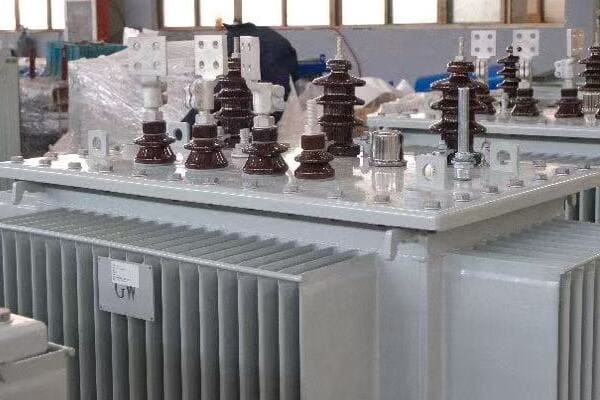
The Step-by-Step Process Inside a Transformer
Let’s break down what happens inside a transformer:
1. Input of Alternating Current
The process starts with:
- AC power entering the primary coil
- Creating a changing magnetic field
I remember being amazed when I first learned that transformers only work with AC power. It’s a crucial point that highlights the importance of our AC power systems.
2. Magnetic Field in the Core
The magnetic field:
- Builds up in the iron core
- Constantly changes direction with AC
3. Induction in Secondary Coil
The changing magnetic field:
- Induces a voltage in the secondary coil
- Creates current in the secondary circuit
4. Voltage Transformation
The voltage change depends on:
- The ratio of turns in primary and secondary coils
- More turns in secondary = higher voltage (step-up)
- Fewer turns in secondary = lower voltage (step-down)
Here’s a simple table showing the relationship between turns and voltage:
| Transformer Type | Primary Turns | Secondary Turns | Voltage Change |
|---|---|---|---|
| Step-up | 100 | 1000 | 10x increase |
| Step-down | 1000 | 100 | 10x decrease |
| Isolation | 1000 | 1000 | No change |
In my early career, I had the opportunity to disassemble an old transformer. Seeing the coils and core up close was a pivotal moment. It made the abstract concepts I had learned come to life.
One fascinating aspect of transformer operation is the concept of mutual inductance. The primary and secondary coils don’t physically touch, yet energy is transferred between them efficiently. This principle amazed me when I first grasped it, and it still does today.
The choice of core material is crucial in transformer design. I once worked on a project comparing different core materials. We found that using advanced silicon steel alloys significantly improved efficiency by reducing energy losses in the core.
Transformer efficiency is remarkably high, often exceeding 98%. However, even small losses can be significant in large power systems. In a recent project, we focused on optimizing transformer design to squeeze out every bit of efficiency. The cumulative energy savings over the transformer’s lifetime were substantial.
One common misconception is that transformers can change the frequency of AC power. In fact, the frequency remains the same; only the voltage and current change. I’ve had to clarify this point many times, especially when dealing with international power systems.
The cooling system in transformers is an often-overlooked but critical component. In larger transformers, I’ve worked with oil-immersed designs where the oil serves both as an insulator and a coolant. The engineering behind keeping these systems cool under heavy loads is fascinating.
Harmonics in power systems can significantly affect transformer performance. In a recent industrial project, we had to design special transformers to handle the harmonic-rich environment created by variable frequency drives. This required a deep understanding of how harmonics interact with the transformer’s magnetic fields.
The development of smart transformers is an exciting area I’m currently involved in. These transformers can adjust their operation in real-time based on load conditions, improving efficiency and grid stability. It’s amazing to see how digital technology is being integrated into this century-old device.
Understanding the internal workings of a transformer is key to appreciating its role in our power systems. From the basic principle of electromagnetic induction to the complexities of modern designs, transformers continue to be a critical component in electrical engineering. As we move towards more advanced and efficient power systems, the fundamental principles of transformer operation remain at the heart of electrical power distribution.
Final Summary: One Device, Massive Impact
Have you ever stopped to think about how one simple device could have such a profound impact on our modern world? The transformer, often overlooked, is truly a cornerstone of our electrical infrastructure. Let’s recap why this device is so crucial.
Transformers are fundamental to modern electrical systems, enabling efficient power transmission and distribution. They allow for the safe and efficient transfer of electricity from power plants to homes and businesses. By changing voltage levels, transformers make it possible to transmit power over long distances with minimal losses and then deliver it safely to end-users.
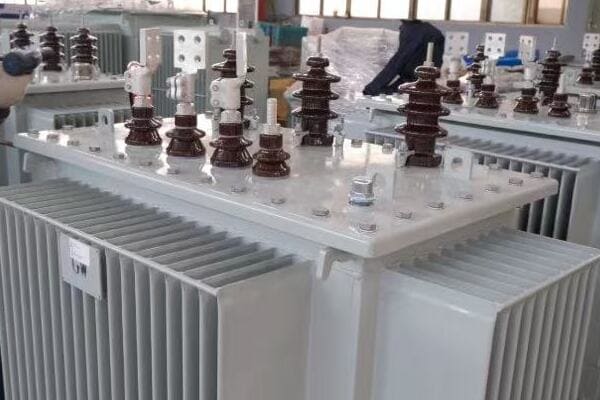
The Far-Reaching Impact of Transformers
Let’s reflect on the key points we’ve covered about transformers:
1. Enabling Efficient Power Distribution
Transformers are crucial for:
- Stepping up voltage for long-distance transmission
- Reducing power losses in transmission lines
- Stepping down voltage for safe local use
Throughout my career, I’ve seen firsthand how transformers form the backbone of our power grid. From massive substation transformers to small units in neighborhoods, each plays a vital role in getting power to where it’s needed.
2. Versatility in Applications
Transformers are used in:
- Power grids and substations
- Industrial machinery and equipment
- Consumer electronics and appliances
3. Safety and Isolation
Transformers provide:
- Electrical isolation between circuits
- Protection against voltage spikes
- Safer electrical systems in buildings and devices
4. Enabling Technological Progress
Transformers have been key in:
- Powering the digital revolution
- Supporting renewable energy integration
- Facilitating electric vehicle charging infrastructure
Here’s a table summarizing the impact of transformers in different sectors:
| Sector | Role of Transformers | Impact |
|---|---|---|
| Power Grid | Voltage transformation | Efficient power distribution |
| Industry | Power supply for machinery | Enhanced manufacturing capabilities |
| Residential | Safe power delivery to homes | Modern home comforts |
| Electronics | Voltage adaptation in devices | Portable electronic devices |
| Renewable Energy | Grid integration of variable sources | Clean energy adoption |
In my years of working with power systems, I’ve come to see transformers as the unsung heroes of our electrical world. I remember a project where we upgraded the transformers in an old industrial area. The improvement in power quality and reliability was remarkable, breathing new life into businesses that had been struggling with outdated infrastructure.
One aspect of transformers that continues to amaze me is their longevity. I’ve worked with transformers that have been in service for over 50 years, still performing efficiently. This durability is a testament to the soundness of their fundamental design principles.
The role of transformers in enabling renewable energy integration cannot be overstated. In a recent solar farm project, I saw how specially designed transformers were crucial in converting the variable output of solar panels into grid-compatible power. It’s exciting to see how this century-old technology is adapting to support our transition to cleaner energy sources.
Transformers also play a vital role in urban development. In a high-rise construction project I consulted on, the strategic placement of transformers throughout the building was key to efficient power distribution. It’s fascinating how these devices, hidden away in basements or on rooftops, silently power our modern urban landscapes.
The impact of transformers extends beyond just power distribution. In the realm of electronics, miniature transformers have enabled the development of countless devices we use daily. From smartphone chargers to medical equipment, these small transformers ensure our devices receive the correct voltage to operate safely and efficiently.
As we look to the future, the importance of transformers is only growing. With the advent of smart grids and the increasing need for flexible power systems, transformers are evolving. I’m currently involved in projects developing smart transformers that can communicate with the grid, adjusting their operation in real-time to optimize power flow and respond to changing demands.
The environmental impact of transformers is an area of increasing focus. In recent years, I’ve been part of initiatives to develop more environmentally friendly transformer designs, using biodegradable oils and more efficient core materials. It’s encouraging to see how this technology is adapting to meet our growing environmental concerns.
In conclusion, transformers are far more than just another component in our electrical systems. They are the enablers of our modern, electrified world. From powering our homes and businesses to supporting the latest technological advancements, transformers play a crucial role in nearly every aspect of our lives. As we continue to evolve our energy systems to meet future challenges, the humble transformer will undoubtedly remain at the heart of these innovations, quietly and efficiently keeping our world powered.
Conclusion
Transformers are fundamental to our electrical systems, enabling efficient power transmission and safe distribution. They change voltage levels, allowing electricity to travel long distances and be used safely in homes and businesses. Understanding transformers helps us appreciate the complexity and efficiency of our modern power infrastructure.
Recent Post
Quick Message
Request A free quote
We'd like to work with you
- +86 15558785111
- chbebgroup@chbebpower.com
- +86 15558785111
What We Do
CHINA BEI ER BIAN (CHBEB) GROUP, with 218 million in registered capital, originated from Beijing Beierbian Transformer Group. Headquartered in Beijing for R&D, it operates major production bases in Nanjing and Yueqing, producing high-quality products.
Latest Post
Latest Product
Contact Us
- +86 15558785111
- chbebgroup@chbebpower.com
- +86 15558785111
BeiJing
No 3,RongJing East Road,BeiJing Economic Technological Development Area,BeiJing,China
JiangSu
No 7️Xiangfeng Road,Jiangning,NanJing,JiangSu,China
YueQing
No.211, Wei 16 Road, Industrial Zone, Yueqing, Wenzhou, Zhejiang, China.
XiangYang Industrial Zone ,YueQing,WenZhou,ZheJiang,China
